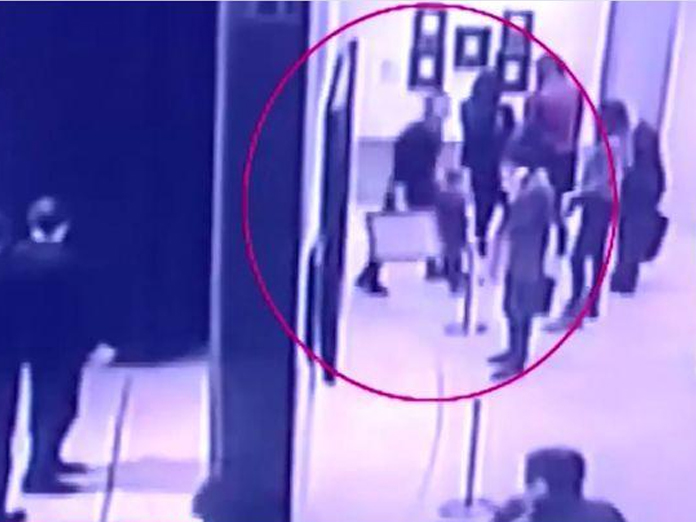Live
- BJP urges EC to stop Cong’s ‘Guarantee Cards’ campaign aimed to 'induce voters'
- Congress cheated Madigas: Dr. RS Praveen Kumar
- CBDT signs record 125 pacts to ease tax payments by big multinational firms
- Kamal Nath accuses BJP of ‘threatening’ Congress leaders in Chhindwara
- Odisha: BJP, BJD allege violation of MCC
- PM Modi lands in Guwahati to kickstart poll campaign
- ‘100 day action plan’ is PM Modi’s signature style for setting goals and meeting targets
- BJP will change the Constitution if they come to power again, says Priyanka Gandhi
- BJP-led NDA to cross 390-mark in Lok Sabha polls, predicts India TV-CNX survey
- Haier launches new TV series in four sizes in India
Just In

Facial recognition video technology has led to recovery of a million dollar painting, stolen from an art gallery in Moscow, and the thiefs arrest, according to authorities in Moscow, the Russian capital
New Delhi, Feb 17: Facial recognition video technology has led to recovery of a million dollar painting, stolen from an art gallery in Moscow, and the thief's arrest, according to authorities in Moscow, the Russian capital.
Dmitri Golovin, head of the Urban Video Surveillance Division of the Moscow government's Department of Information Technologies, told IANS in an e-mail interview about the process of recovery of 'Ai-Petri', a painting by Arkhip Kuindzhi, one of Russia's noted landscape painters. The theft of the painting last month was widely reported in the international media.
"The painting was located within eight hours of being stolen from the Tretyakov Gallery in Moscow with the help of smart city technologies deployed in the capital," Golovin said. "The thief, Denis Chupikov, was tracked down through the surveillance videos," he said.
According to Golovin, Moscow's smart city and safe city solutions comprise video surveillance system across the capital.
The painting "Ai-Petri", painted in the 1890s by Kuindzhi, has an estimated value of $1 million. It had been brought to Moscow from the collection of St Petersburg's Russian Museum for an exhibition.
According to the Russian police, the painting, stolen on the artist's birthday, was recovered from a construction site outside of Moscow.
Golovin said 70 per cent of crimes in Moscow are investigated using a video surveillance system. "To date more than 100,000 entrances of apartment buildings, about 20,000 courtyards and over 3,500 public places have been equipped with cameras," he said.
The deployment of video analytics to automatically review what the cameras record, including facial recognition, began in Moscow last year.
"At present, the facial recognition system has been implemented for 1,500 video streams and we are planning to increase it to 105,000, that is, to cover all the cameras in the areas of surveillance," Golovin said.
From this year, the neuro-network system, allowing recognition of wanted criminals from the crowd, is also being introduced," he said.
The Moscow official said not only paintings but also stolen items like bicycles have been recovered using the technology. "Users can get access to the system anywhere -- at a control centre, workplace or on their mobile devices," he said.
The Moscow government, Golovin said was ready to share the experience on deployment of video surveillance systems with other countries. "We have met representatives of Bangladesh, South Africa, Kyrgyzstan and Kazakhstan, and are ready to share our experience," he said.
According to him, the unique feature of the Moscow solutions is creation of a unified video surveillance system and broad access to it, not only for security purposes but also for urban services.

© 2024 Hyderabad Media House Limited/The Hans India. All rights reserved. Powered by hocalwire.com







